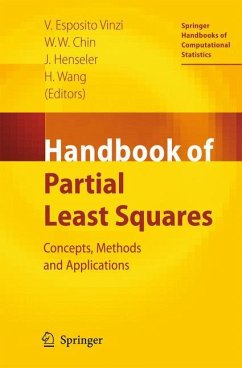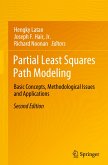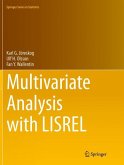Partial Least Squares is a family of regression based methods designed for the an- ysis of high dimensional data in a low-structure environment. Its origin lies in the sixties, seventies and eighties of the previous century, when Herman O. A. Wold vigorously pursued the creation and construction of models and methods for the social sciences, where "soft models and soft data" were the rule rather than the exception, and where approaches strongly oriented at prediction would be of great value. Theauthorwasfortunatetowitnessthedevelopment rsthandforafewyears. Herman Wold suggested (in 1977) to write a PhD-thesis on LISREL versus PLS in the context of latent variable models, more speci cally of "the basic design". I was invited to his research team at the Wharton School, Philadelphia, in the fall of 1977. Herman Wold also honoured me by serving on my PhD-committee as a distinguished and decisive member. The thesis was nished in 1981. While I moved into another direction (speci cation, estimation and statistical inference in the c- text of model uncertainty) PLS sprouted very fruitfully in many directions, not only as regards theoretical extensions and innovations (multilevel, nonlinear extensions et cetera) but also as regards applications, notably in chemometrics, marketing, and political sciences. The PLS regression oriented methodology became part of main stream statistical analysis, as can be gathered from references and discussions in important books and journals. See e. g. Hastie et al. (2001), or Stone and Brooks (1990),Frank and Friedman (1993),Tenenhauset al. (2005),there are manyothers.
From the reviews:
"I found the book to be a good resource for those without prior knowledge of PLS looking forward to an introduction as well as a comprehensive reference for every researcher and every practitioner interested in the most recent advances in PLS methodology. All of them should have this title as an essential part of their library. ... Great Stuff! ... will be the definitive reference work in the field for a good time to come. ... it is wonderfully readable and referable." (Current Engineering Practice, August, 2011)
"The book is divided into three parts, dealing, respectively, with contemporary methodological developments, applications in marketing and related areas, and tutorials on particular aspects of PLS analysis. It provides a comprehensive overview of recent advances in the area, and describes cutting-edge methodological developments showing how PLS can be applied in tackling a wide variety of problem types. ... for people who do have some prior experience with PLS, this book is a goldmine of novel methodological and practical applications." (David J. Hand, International Statistical Review, Vol. 80 (3), 2012)
"I found the book to be a good resource for those without prior knowledge of PLS looking forward to an introduction as well as a comprehensive reference for every researcher and every practitioner interested in the most recent advances in PLS methodology. All of them should have this title as an essential part of their library. ... Great Stuff! ... will be the definitive reference work in the field for a good time to come. ... it is wonderfully readable and referable." (Current Engineering Practice, August, 2011)
"The book is divided into three parts, dealing, respectively, with contemporary methodological developments, applications in marketing and related areas, and tutorials on particular aspects of PLS analysis. It provides a comprehensive overview of recent advances in the area, and describes cutting-edge methodological developments showing how PLS can be applied in tackling a wide variety of problem types. ... for people who do have some prior experience with PLS, this book is a goldmine of novel methodological and practical applications." (David J. Hand, International Statistical Review, Vol. 80 (3), 2012)








